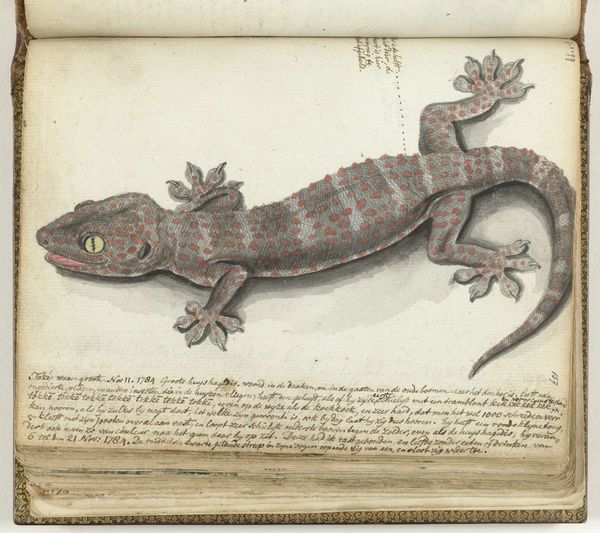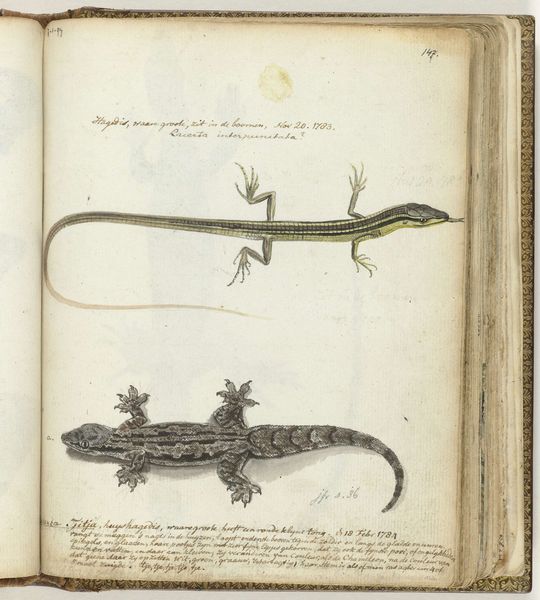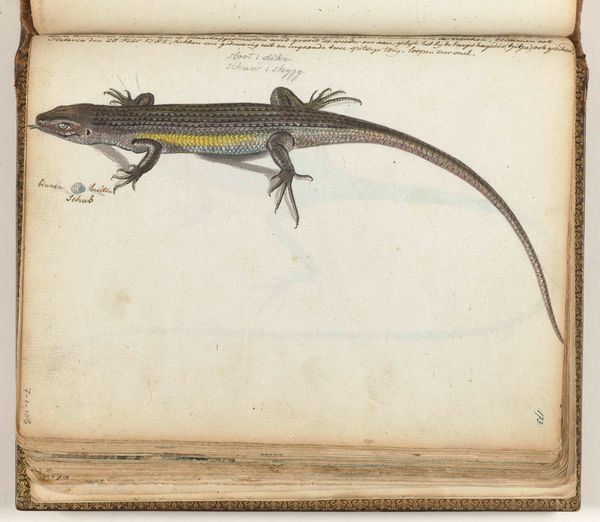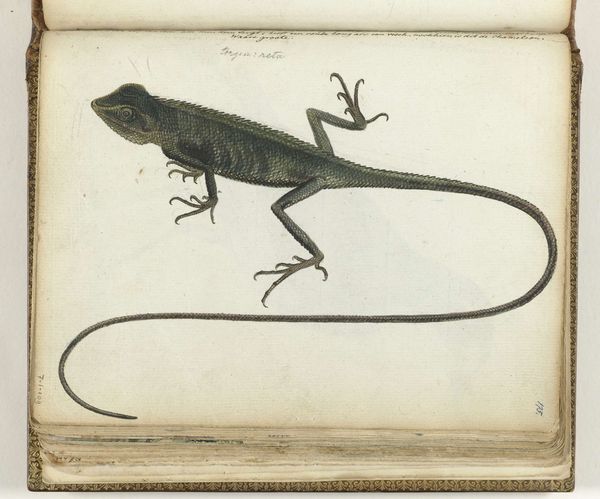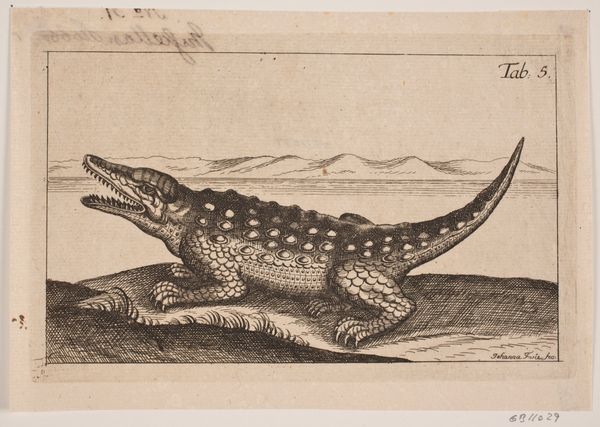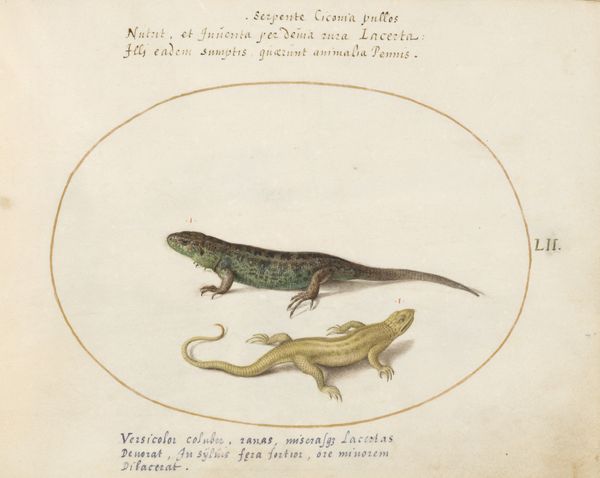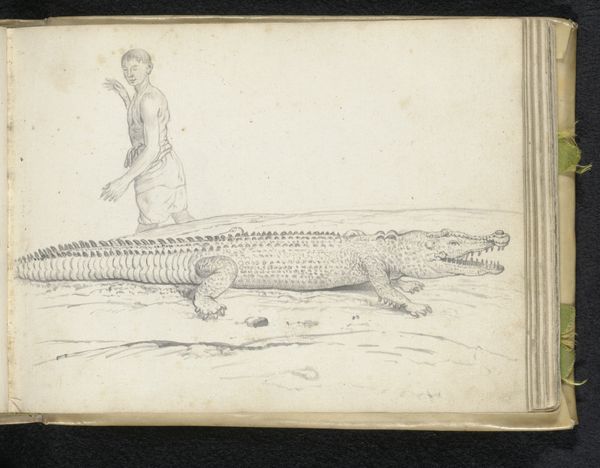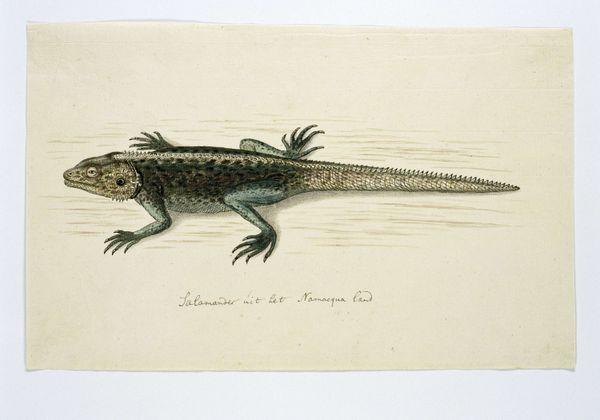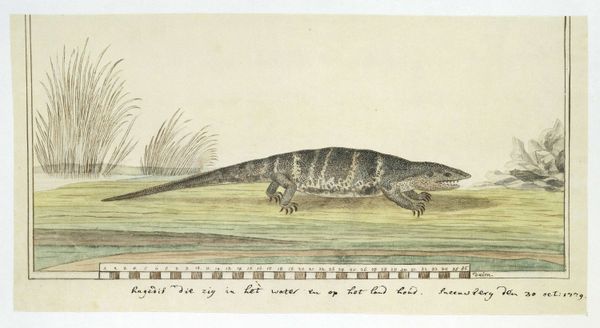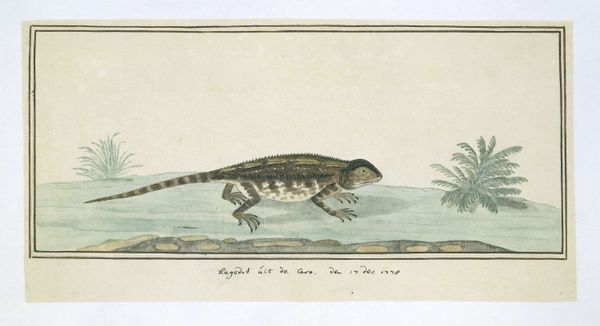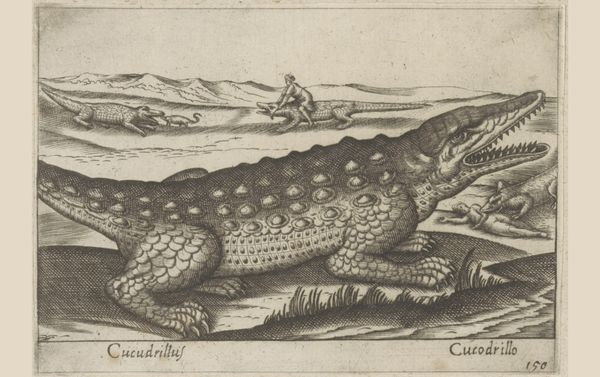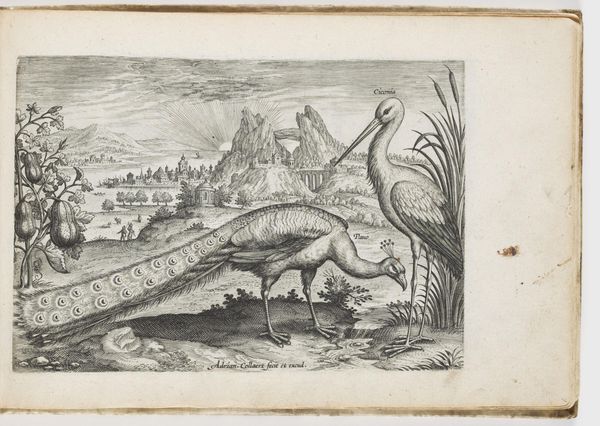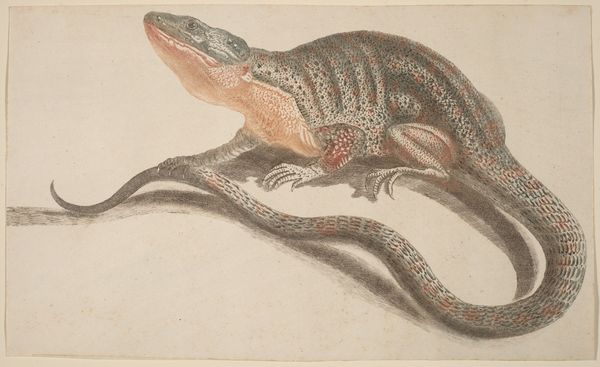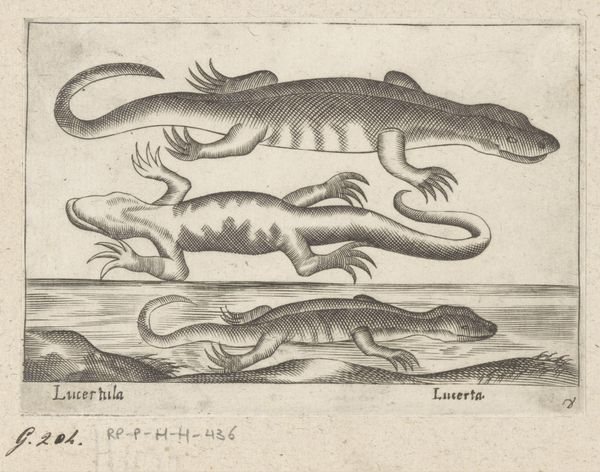
drawing, coloured-pencil, paper, watercolor
#
drawing
#
coloured-pencil
#
animal
#
dutch-golden-age
#
paper
#
watercolor
#
coloured pencil
#
15_18th-century
#
genre-painting
#
realism
Dimensions: height 155 mm, width 195 mm
Copyright: Rijks Museum: Open Domain
Curator: "Minjawa of Leguaan," potentially dating back to 1784, by Jan Brandes. It's rendered in a combination of drawing, colored pencil, and watercolor on paper. Editor: It looks quite striking, doesn't it? There is such precise rendering, a seemingly clinical observation… Yet it captures the creature’s subtle form. The artist’s lines reveal texture that begs you to study it carefully! Curator: It's part of a broader genre, where there's an almost taxonomic drive to document the natural world. Consider Brandes' background and the socio-political climate; natural resources were being surveyed and extracted—art played a role in that endeavor, didn’t it? Editor: Absolutely. But the image's narrative runs much deeper. Whose labor cultivated the resources enabling Brandes to create this rendering? The pigments alone reflect complex global trade networks. This piece functions within—and because of—Dutch colonialism. The artist profits from that exchange, and the natural object is divorced from its origins! Curator: His meticulousness might come across like an uncritical transcription of the era's dominant social and labor relations, but I am equally drawn to Brandes' commitment to material fidelity; look at how he renders the scales, for instance. It is a visual cataloging of texture and tone and it has lasting appeal for the student of material history. Editor: Precisely. This work underscores art’s complicated agency—it can function both as a product of exploitation and as a vehicle to interrogate its systems. By unearthing the forgotten stories tangled within it, we initiate vital dialogues about past and present injustices. Curator: Indeed, this work invites a close look not just at the artistry, but the systems that made such a work—and the study of it—possible. Editor: Exactly. It prompts reflections about art, objectification, and accountability, doesn't it?
Comments
No comments
Be the first to comment and join the conversation on the ultimate creative platform.
